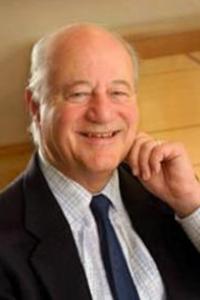Gerald Fischbach, MD
- John E. Borne Professor Emeritus of Medical and Surgical Research in the Departments of Pharmacology and Neuroscience; Dean Emeritus, Faculties of Health Sciences and Medicine

Overview
Academic Appointments
- John E. Borne Professor Emeritus of Medical and Surgical Research in the Departments of Pharmacology and Neuroscience; Dean Emeritus, Faculties of Health Sciences and Medicine
Gender
- Male
Research
Throughout my career, I have studied the formation and maintenance of synapses, the junctions between nerve cells and their targets through which information is transferred. I have been particularly interested in the neuromuscular junction, a synapse that is easily accessible to experimental manipulation. I've pioneered the use of cultured neurons and muscle cells to characterize the biochemical, cellular, and electrophysiological mechanisms underlying development and function of the neuromuscular junction. Beginning in the 1970's, I embarked on a search for molecules released by motor neurons that regulate the number of acetylcholine receptors on muscle cells. This work culminated in 1993 with the purification and cloning of a protein called ARIA (for acetylcholine receptor-inducing activity) that stimulates synthesis of acetylcholine receptors by skeletal muscle cells. This molecule is now known to be a member of a family of trophic factors called neuregulins that are thought to be involved in a variety of important developmental processes in the nervous system. Because ARIA and other neuregulins act by binding to tyrosine kinase receptors on target cells, my work has been key in demonstrating that synaptic development relies upon biochemical mechanisms that are broadly similar to those that underlie the action of nerve growth factor and other well known trophic molecules. My current focus is on trophic factors that influence synaptic efficacy and nerve cell survival.
Selected Publications
Loeb JA, Hmadcha A, Fischbach GD, Land SJ, and Zakarian VL (2002). Neuregullin expression at neuromuscular synapses is modulated by synaptic activity and neurotrophic factors. J. of Neurosci. 22(6).
Mann MA, Knipe DM, Fischbach GD, Fields BN (2002). Type 3 reovirus neuroinvation after intramuscular inoculation: direct invasion of nerve terminals and age-dependent pathogenesis. Virology Nov 25:303(2):222-31.
Jacobson C, Duggan D, and Fischbach G, (2004) Neuregulin induces the expression of transcription factors and myosin heavy chains typical of muscle spindles in cultured human muscle. PNAS 101(33): 12218-12223.
Fischbach G, and Fischbach R, (2004) Stem Cells: science, policy, and ethics. J. of Clinical Investigation 114(10): 1364-1370.
Fischbach RL, and Fischbach GD, (2005) The brain doesn't lie. Am J Bioeth Spring 5(2): 54-55.
Liu Y, Ford BD, Mann MA, and Fischbach GD, (2005) Neuregulin-1 increases the proliferation of neuronal progenitors from embryonic neural stem cells. Dev Biol Jul 15;283(2): 437-445.